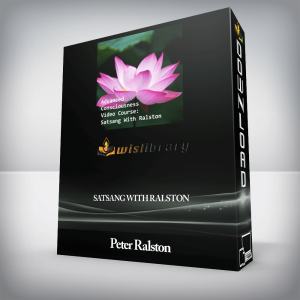Co-Creating Change includes clinical vignettes that illustrate hundreds of therapeutic impasses taken from actual sessions, showing how to understand patients and how to intervene effectively. The book provides clear, systematic steps for assessing patients’ needs and intervening to develop an effective relationship for change.Purchase Co-Creating Change: Effective Dynamic Therapy Techniques – Jon Frederickson courses at here with PRICE $23 $22Written for therapists of all experience levels, Co-Creating Change shows what to do to help “stuck” patients (those who resist the therapy process) let go of their resistance and self-defeating behaviors and willingly co-create a relationship for change instead.Co-Creating Change includes clinical vignettes that illustrate hundreds of therapeutic impasses taken from actual sessions, showing how to understand patients and how to intervene effectively. The book provides clear, systematic steps for assessing patients’ needs and intervening to develop an effective relationship for change.Reviews for Co-Creating ChangeAllan Abbass, MDProfessor of Psychiatry, Dalhousie University“There is no debate. It is an awesome book and a gift to the fields of psychology and psychotherapy.”F. Barton Evans and Judith A. MarisFrederickson’s Co-Creating Change is the best book written on how to practice psychotherapy in many years. This is a masterpiece on conceptualizing and conducting highly effective dynamic psychotherapy. He offers us a literate and well-written synthesis of psychodynamic theory and affective neuroscience supporting his meticulous application of theory to practice. Unlike so many psychotherapists, Frederickson shows us what he does through carefully crafted case examples. There may be no better place to start psychotherapy training.” Psychiatry 79:335-338, 2016David Malan D.M. F.R.C.Psych.,Author of Psychotherapy and the Science of Psychodynamics“This book is a brilliant master class. It demonstrates how to work collaboratively with patients, safely, compassionately and effectively to achieve successful outcomes. Outstanding clarity and the mastery of material are its hallmarks, using experience distilled from analysing therapy sessions.Each technique is illustrated with relevant vignettes, analysing what is happening with the patient and also the rationale for the intervention being made. A clear outline of principles and reasons for each intervention, and the inclusion of common mistakes, danger signals and ways to avoid trouble, adds immensely to the book’s value.This excellent and very readable book enables all therapists to become much more proficient and focused on what they are doing and why. It is an invaluable resource for all therapists and an absolute ‘must have’ for all students.”Stephen E. Finn, Ph.D.Founder, Center for Therapeutic Assessment, Austin, Texas“There are many books on short-term psychotherapy, but Co-creating Change stands out. The clarity of Frederickson’s thought and writing is striking, and the multiple clinical transcripts are inspiring, helpful, and often tremendously moving. No one does a better job explaining how and when to focus on emotions, anxiety, and defenses, or in integrating psychotherapeutic technique with the latest research on neurobiology, attachment, and emotion. Co-creating Change deserves to be read by both novice and experienced psychotherapists alike.”Stanley B. Messer, Ph.D. Dean and Distinguished ProfessorGraduate School of Applied and Professional PsychologyRutgers University“This is the clearest and most clinically useful exposition of Davanloo’s Short-term Dynamic Psychotherapy on the market. It is chock-full of compelling, verbatim, clinical vignettes that bring the reader directly into the session in a wonderfully engaging and evocative way. Woven into the therapy excerpts are Frederickson’s explication of the many varieties of defense and how they can be helpfully responded to by the therapist. Practitioners of all forms of psychodynamic therapy will profit greatly by delving into the pages of this outstanding volume.”Stephen W. Porges, PhDAuthor of The Polyvagal Theory“Co-creating Change is an insightful and well written guide to enable the therapist to build an effective collaboration to lead the client into an awareness of the bio-behavioral shifts that constitute feelings. The book is a road map with excellent examples of how the therapist can ‘co-create’ a therapeutic alliance to stop the suffering by enabling the client to become aware of feelings.”Les Greenberg, Ph.,Author Emotion-Focused Therapy: Coaching Clients to Work Through Their Feelings and Emotion Focused Therapy“An incredibly useful book, showing you how to work in a highly focused manner on emotion, especially unacknowledged anger. You can learn how a therapist actually works by focusing on feeling and on anxiety about and defenses against feeling. Offers a crystal clear and highly practical presentation of contemporary brief dynamic therapy techniques with plenty of transcript examples. Good for new and advanced practitioners of any therapeutic profession or orientation and for students.”Jaak PankseppBaily Endowed Professor of Animal Well-Being Sciences, Washington State UniversityAuthor : Affective Neuroscience (1998) and Archaeology of Mind (2012)“Frederickson integrates the emerging brain sciences of affective feelings and the dynamics of the inner life with a detailed analysis of how to manage clinical relationships. With a rich blend of emerging understanding of our brains’ emotional processes, brought to life in skilled therapeutic engagements, we are led to experience how the strengths and weaknesses of clients can be steered toward harmonious ways of living. Anyone interested in the breadth and depth of mental life will find this to be an exceptional guide to therapeutic progress.”Marion Solomon, Ph.D.Co-author of Love and War in Intimate Relationships: Connection, Disconnection, and Mutual Regulation in Couple Therapy“This book synthesizes research and theory in a clear and straightforward way, compatible with modern ideas from the fields of neuroscience, attachment theory, interpersonal communication, and developmental theories. Change requires a well-equipped store of knowledge about ways to confront anxiety and defenses. This is exactly what Co-Creating Change offers. It is a practical guide for change through the dyadic relationship; an integrated model to help people break the chains of their suffering.”Patricia Coughlin, Ph.D,Faculty, University of New Mexico; Author:

 The NeuroSecrets – MP3s for Mindfulness – Mark Waldman
₹3,984.00
The NeuroSecrets – MP3s for Mindfulness – Mark Waldman
₹3,984.00
 Expecting Adam – Martha Beck
₹3,652.00
Expecting Adam – Martha Beck
₹3,652.00
Co-Creating Change: Effective Dynamic Therapy Techniques – Jon Frederickson
₹3,652.00


